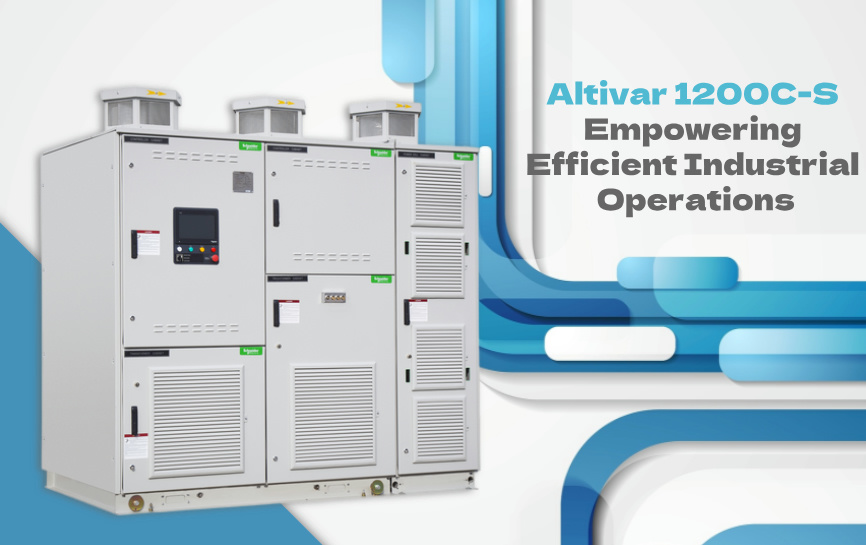Unlocking the Secrets of AC Drives: Discover Their Power and Potential in Your Industry!
In the realm of modern industrial applications, AC drives play a pivotal role in enhancing the efficiency and functionality of machinery. These devices, also known as variable frequency drives (VFDs), are crucial for controlling the speed and torque of electric motors, leading to optimized performance across various sectors. This article aims to demystify AC drives by explaining what they are, how they operate, and how they are utilized in different industries. Whether you're a seasoned professional or a newcomer to the field, understanding the basics of AC drives can significantly impact your operational effectiveness and energy savings.

Understanding AC Drives
AC drives are electronic devices that manage the speed and torque of AC motors by varying the frequency and voltage of the electrical power supplied to the motor. At their core, AC drives consist of three main components: a rectifier, a DC bus, and an inverter. The rectifier converts incoming AC voltage into DC voltage, which is then filtered and stored in the DC bus. The inverter takes this DC voltage and converts it back into AC voltage, but with adjustable frequency and amplitude, allowing for precise control of the motor's performance. The technology behind AC drives has evolved significantly, with advancements in semiconductor technology and digital signal processing leading to more efficient and reliable devices. In my experience, a close friend working in a manufacturing plant saw a dramatic improvement in productivity after integrating AC drives into their conveyor systems, showcasing the transformative power of this technology.
How AC Drives Work
The operational principles of AC drives are fascinating and fundamental to their effectiveness. When powered on, the AC drive first converts the incoming alternating current (AC) into direct current (DC) using the rectifier. This DC voltage is then smoothed out and stored in the DC bus. The next step involves the inverter, which takes the stored DC and converts it back into AC, adjusting the frequency and voltage as needed to control the motor's speed. Modulation techniques, such as pulse width modulation (PWM), are commonly employed to finely tune the output waveform, allowing for smooth and efficient motor operation. Additionally, feedback mechanisms, like tachometers or encoders, provide real-time data on motor performance, enabling the AC drive to make instant adjustments for optimal operation. A colleague of mine who works in automotive manufacturing noted that the implementation of AC drives not only improved the speed of their assembly lines but also reduced wear and tear on the machinery due to the smoother operation.
Applications of AC Drives in Various Industries
AC drives find applications across a multitude of industries, each leveraging their unique capabilities to enhance operational efficiency. In manufacturing, AC drives are utilized to control conveyor belts, pumps, and fans, allowing for variable speed operation that matches production demands. In HVAC systems, they regulate the speed of motors in heating and cooling equipment, leading to significant energy savings. The automotive industry benefits from AC drives in assembly lines, where precise control over motor speed is essential for maintaining production rates. Renewable energy sectors, such as wind and solar, also employ AC drives to optimize the performance of generators and inverters, ensuring maximum energy extraction. A friend working in a renewable energy startup shared how integrating AC drives into their solar inverters allowed them to adjust output according to grid demands, greatly enhancing their system's reliability and efficiency.
Benefits of Using AC Drives
The implementation of AC drives offers numerous advantages that can transform industrial operations. One of the primary benefits is energy savings; by adjusting motor speed to match load requirements, AC drives can significantly reduce energy consumption, translating to lower operational costs. Furthermore, the improved efficiency leads to less wear and tear on machinery, extending equipment lifespan and reducing maintenance needs. Enhanced control capabilities also mean operators can fine-tune processes for optimal performance, resulting in higher product quality and consistency. These advantages are not merely theoretical; they are backed by real-world experiences, such as that of my friend in the manufacturing sector, who reported a 30% reduction in energy costs after the adoption of AC drives.
Maximizing Efficiency with AC Drives
In conclusion, AC drives are essential tools in modern industrial applications, providing unparalleled control over motor speed and torque. Understanding their functionality and diverse applications can empower businesses across various sectors to enhance efficiency and reduce costs. As industries continue to evolve and embrace new technologies, the role of AC drives will only become more significant. By leveraging the power of AC drives, organizations can optimize their operations, contribute to sustainability efforts, and stay competitive in a rapidly changing market.






Comentarios